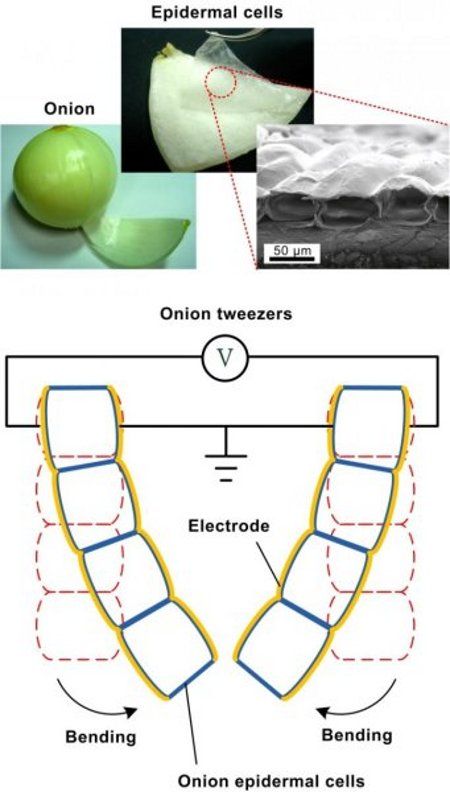A research paper published earlier this week in the journal Applied Physics Letters details the use of cells taken from regular onions to engineer an artificial muscle able to expand, contract and even bend, just like the real deal.
The onion-made artificial muscle, created by researchers with the National Taiwan University, does not change its shape and orientation on its own accord. Instead, it moves in response to applied voltage.
The National Taiwan University team of scientists who engineered it say that, to their knowledge, it is the first artificial muscle proven to be capable of moving in different directions when zapped with various voltages.
“Unlike previous artificial muscles, this one can either expand or contract to bend in different directions depending on the driving voltage applied,” reads an American Institute of Physics report concerning this study.
The researchers say that, as part of an experiment, they placed two such artificial muscles on a pair of tweezers and then fired electricity at them. The voltage made the muscles move and the tweezers moved with them.
Apparently, the artificial onion-made muscles proved strong enough to make the pair of tweezers grab hold of a cotton ball and lift it. Pretty freaky, right?
How do you make muscles from onions?
The National Taiwan University scientists explain that, to create their artificial muscles, they started by collecting onion epidermis cells. They then used an acid to remove the protein keeping the walls of these cells rigid.
Once softened, the cells, arranged in a thin layer, were coated on both sides with gold. It was this gold coating that helped carry the electrical current to the cells and make them bend and stretch in response to it.
Because the gold coating varied in thickness, the layer of onion cells responded differently to distinct voltages. Thus, low voltages made the cells bend downwards and high voltages flexed them upwards.
“A low voltage made them expand and flex downwards, towards the thicker bottom layer. A high voltage, on the other hand, caused the cells to contract and flex upwards, towards the thinner top layer,” the researchers explain.
Given the encouraging outcome of these experiments, the scientists say that they plan to continue working with onion cells and try to figure out a way to use them to make even stronger artificial muscles.

 14 DAY TRIAL //
14 DAY TRIAL // 

